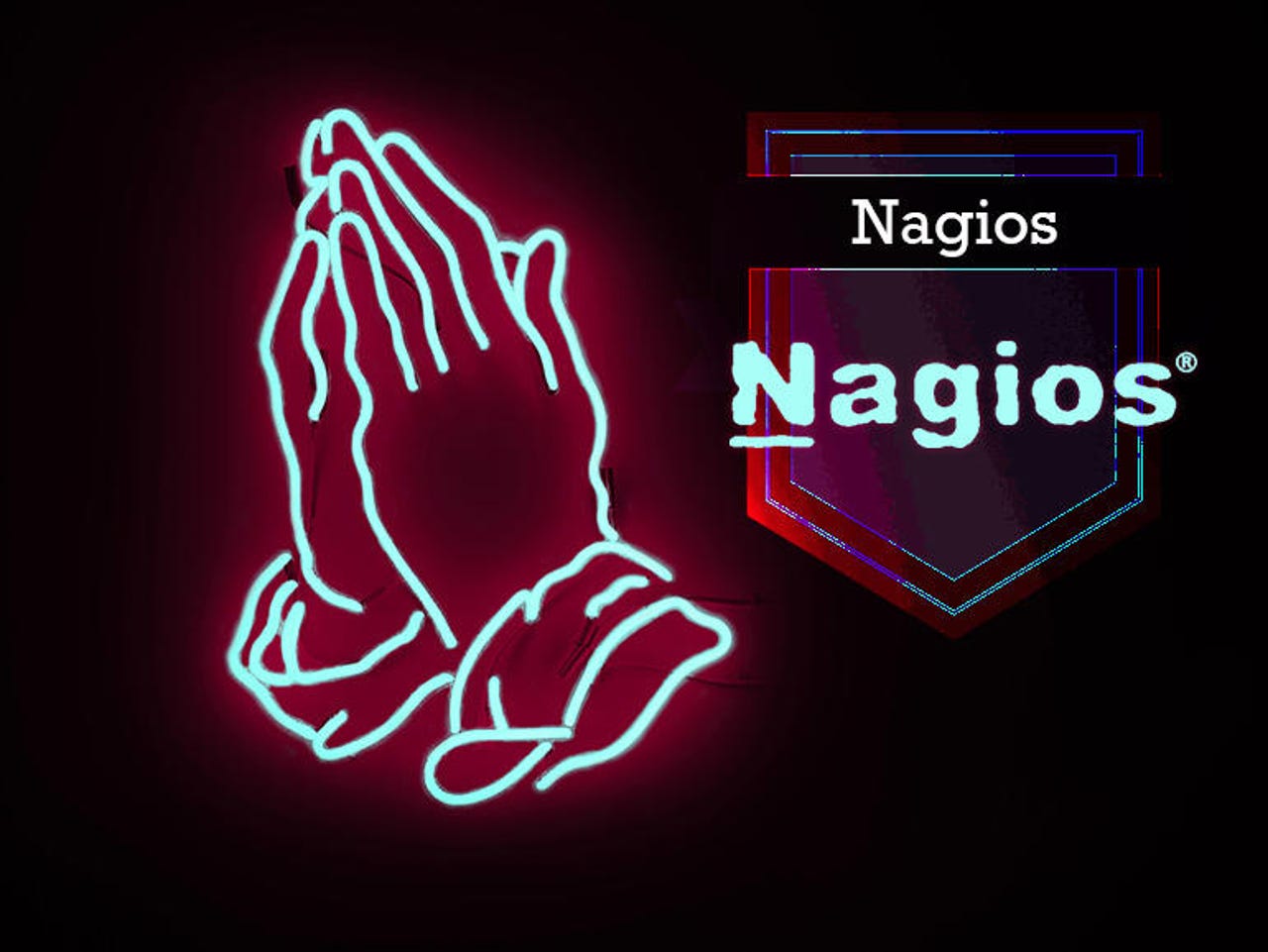What's in a name? These DevOps tools come with strange backstories

Ansible
See it now: Ansible
Ansible is an open-source software provisioning, configuration management, and application deployment tool from Red Hat. Ursula K. Le Guin coined the word "ansible" in her 1966 novel Rocannon's World. The word was a contraction of "answerable," as the device would allow its users to receive answers to their messages in a reasonable amount of time, even over interstellar distances. Ansible has found its way into many other science fiction stories by other authors as a tool for hyperspace.
Related stories:
- 12 gifts that teach you how to code CNET
- What is DevOps? An executive guide
- Low-code platforms: A cheat sheet TechRepublic
- Programming languages: Developers reveal most loved, loathed
Disclosure: ZDNet may earn commissions from some of the products featured in this gallery.
Capistrano
See it now: Capistrano
Capistrano is an open-source tool designed to remotely automate scripts for deploying web applications. Capistrano is the town in central Italy where Saint John of Capistrano was born. San Juan Capistrano in California is the home of a migratory phenomenon where, every spring, swallows migrate 6,000 miles from Argentina. In a chat log, the developers liked the name because Capistrano is "casually sophisticated, pleasant, and refreshing."
Related stories:
Docker
See it now: Docker
Docker is an open-source container-level operating system virtualization system. Since Docker is all about containers, it seems fitting that the company's logo looks like a stylized container ship -- and the ship/dock connection makes the name Docker all the more fitting.
Related stories:
Ganglia
See it now: Ganglia
Ganglia are the connecting structures between the peripheral and central nervous systems in the human body. In the DevOps world, Ganglia is an open-source distributed monitoring system, essentially creating a peripheral nervous system for systems, clusters, networks, and widely distributed environments.
Related stories:
Gradle
See it now: Gradle
Gradle is an open-source build tool intended to improve on Apache Maven in terms of flexibility, performance, user experience, and dependency management. According to a forum post, Gradle, which sounds like an inverse portmanteau of cradle to grave, actually has no meaning. It just sounded cool. The logo refers to the effort and tenacity to perform a build, the effort an elephant can expend.
Related stories:
Icinga
See it now: Icinga
Icinga is an open-source network monitoring system created as a fork of Nagios, intended to overcome perceived limits of Nagios. Icinga is a Zulu word meaning to look for or search for. It also sounds like icing, which makes us think of cake. Almost everything makes us think of cake.
Related stories:
Java
See it now: Java
Java is a general purpose programming language that's pretty much become the foundation for our modern mobile-centric world. It's also now owned by Oracle, which has caused enormous amusement and employment for attorneys everywhere. As for its name, it was originally Oak, then Green, then -- from a whiteboard brainstorming session fueled by coffee -- Java.
Related stories:
Jenkins
See it now: Jenkins
Jenkins is a Java-based automation server. It was originally called Hudson, but was changed due to a dispute between the developers and Oracle, owner of the Hudson trademark. The Jenkins logo is an image of a butler, often referred to as Mr. Jenkins. World of Warcraft players can't help but think of the Leeroy Jenkins meme whenever they hear the word Jenkins.
Related stories:
Jira
See it now: Jira
Jira is a proprietary issue tracking product developed by Atlassian that allows bug tracking and agile project management. The product name is a truncation of Gojira, the Japanese word for Godzilla. That makes Jira, though a few degrees of separation, a reference to Bugzilla, a competing product.
Related stories:
Juju
Kubernetes
See it now: Kubernetes
Kubernetes is an open-source orchestration system originally developed by Google, intended to automate application deployment and scaling. Kubernetes originates from Greek, meaning to be a captain, a pilot, or a navigator.
Related stories:

Nagios
See it now: Nagios
Nagios is an open-source system, network, and infrastructure monitoring service. Nagios is also a recursive acronym standing for "Nagios Ain't Gonna Insist on Sainthood." See, back before it was called Nagios, it was called NetSaint until it ran afoul of the trademark gods. As it turns out, Agios is also Greek for "saint." Can you just stand all that cleverness?
Related stories:
Perl
See it now: Perl
It's a little difficult to classify Perl as a DevOps language, but since it was so heavily used in the early days of web applications, it deserves a place in our list. It's also a cool name. Developer Larry Wall originally named it Pearl, but it turned out there was another language by that name. So Perl (without the "a") was born.
Related stories:
Prometheus
See it now: Prometheus
Prometheus is an open-source monitoring project that records real-time metrics as a service. Prometheus was also the mythical Titan who stole fire from the gods and gave it to humanity, leading to the birth of civilization. So, naming your software Prometheus is not pretentious in any way. Not at all. Plus, a lot of science fiction starships have been named Prometheus.
Related stories:
Puppet
See it now: Puppet
Puppet is a so-called open-core, open-source product, meaning some of it is open source and some of it is all about commercialization. The software is designed to manage system configuration through a declarative language. Essentially, the software is intended to make systems perform like they're puppets on the end of a string.
Related stories:
Python
See it now: Python
Python is a high level programming language used in many network and web applications. The name Python was named after Monty Python's Flying Circus, earning Python our Most Delightful Etymology Award for this gallery.
Related stories:
Ruby
See it now: Ruby
Ruby is a general purpose programming language that's the foundation of the very popular Ruby on Rails framework. The jewel-styled name Ruby was inspired by Perl (which was briefly going to be called Pearl).
Image source.
Related stories:
Ruby on Rails
See it now: Ruby on Rails
Ruby on Rails provides a rich web application framework for fast development and deployment. The "on Rails" portion of the Ruby On Rails name is because frameworks are designed to provide a clear, smooth, somewhat automatic path, like steel rails provide to trains.
Related stories:
Scala
See it now: Scala
Scala is a JVM-compatible language that is both object-oriented and support functional coding, with the intent of producing more concise, easier-to-support code. Scala is a blend of scale and language, implying code designed to grow. Scala is also a nightclub in London, an English electronic rock band from the 90s, and was a Charlotte Street theatre constructed in 1772.
Related stories:
Snort
See it now: Snort
Snort is open source intrusion detection software managed by Cisco. Snort, at its most basic, is a packet sniffer, so it doesn't take a pig flying to see the jump from sniff to snort, which explains why Snort's mascot is a pig.
Related stories:
Splunk
See it now: Splunk
Splunk is a machine data analytics firm that provides intelligence, security, and analytics solutions for infrastructure and IT operations. The name Splunk is derived from spelunk, the practice of cave exploration for the pure fun and adventure of it.
Related stories:
Squid
See it now: Squid
Squid is a high-performance proxy caching server for web clients, going all the way back to the earliest day of the web. Squid was the codename for the project and the name stuck.
Related stories:
Vagrant
See it now: Vagrant
Vagrant is an open-source tool for building and maintaining software development environments hosted on virtual machines. While the word "vagrant" implies someone down on their luck, a key part of the definition is someone without a fixed abode. Since Vagrant is designed to virtualize software development environments so they're portable, the name is rather appropriate.
Related stories: